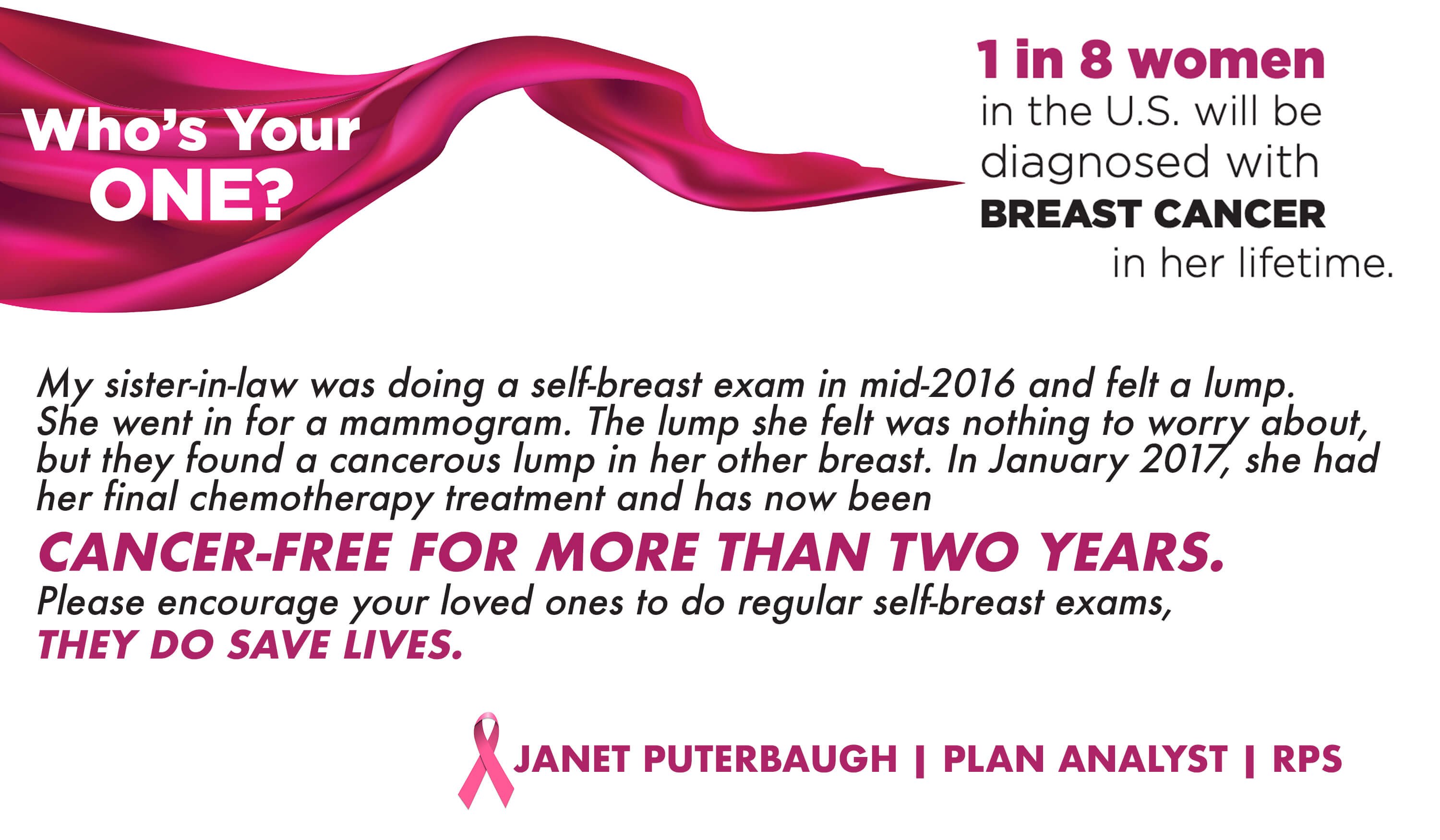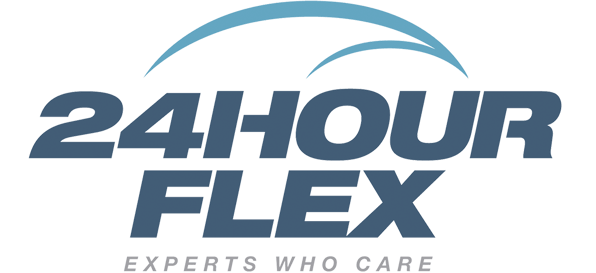October is Breast Cancer Awareness Month. As breast cancer is the most common cancer among women in the US, accounting for 30% of newly diagnosed cancers, we all have been affected. 1 in 8 women will be diagnosed with breast cancer in her lifetime.

Janet Puterbaugh, one of our plan analysts, shared this story:
My sister-in-law was doing a self-breast exam in mid-2016 and felt a lump. She went in for a mammogram. The lump she felt was nothing to worry about, but they found a cancerous lump in her other breast. In January 2017, she had her final chemotherapy treatment and has now been cancer-free for more than two years. Please encourage your loved ones to do regular self-breast exams, they do save lives.
Death rates from breast cancer have been declining since about 1990, in part due to better screening and early detection, increased awareness, and continually improving treatment options.
According to the American Institute for Cancer research, about 41,760 women in the U.S. are expected to die in 2019 from breast cancer, though death rates have been decreasing since 1989. Women under 50 have experienced larger decreases. These decreases are thought to be the result of treatment advances, earlier detection through screening, and increased awareness.
Whether a cancer survivor had a health savings account (HSA) as part of their high-deductible health plan was linked to access to care, according to the results of a study recently published in the Journal of Oncology Practice.
“This was an important study because of the increasing role of high-deductible health plans in our insurance system,” said Lindsay Sabik, PhD, associate professor, health policy and management, University of Pittsburgh Graduate School of Public Health, during an interview with Cancer Network. “As [high-deductible health plans] become more widespread, understanding their impacts for different patient populations will be important.”
A total of 4,321 people with a history of cancer and 95,316 without a history of cancer were identified and included in the analysis. Individuals were further stratified by their health plan type: low-deductible health plan, high-deductible health plan with an HSA, and high-deductible health plan without an HSA.

Significantly more cancer survivors in high-deductible health plans without an HSA delayed or skipped care compared with those in low-deductible health plans (13.9% vs 7.6%; P <0.001). In contrast, the proportion of cancer survivors who delayed or skipped care was similar between those in high-deductible health plans with an HSA and those in low-deductible health plans (8.9% vs 7.6%; P=0.343), indicating that having an HSA is linked to access to care.
In 2019, an estimated 268,600 new cases of invasive breast cancer will be diagnosed in women in the U.S. as well as 62,930 new cases of non-invasive (in situ) breast cancer.
62% of breast cancer cases are diagnosed at a localized stage, for which the 5-year survival rate is 99%.
Having an HSA is a proven asset to the prevention, early detection, and treatment of breast cancer.
Breast Cancer-related eligible expenses include medication, screenings like mammograms, breast MRIs, and even breast reconstruction surgery.
For more information on HSA-eligible expenses, click here.
Questions about HSAs? Register for HSADay!

